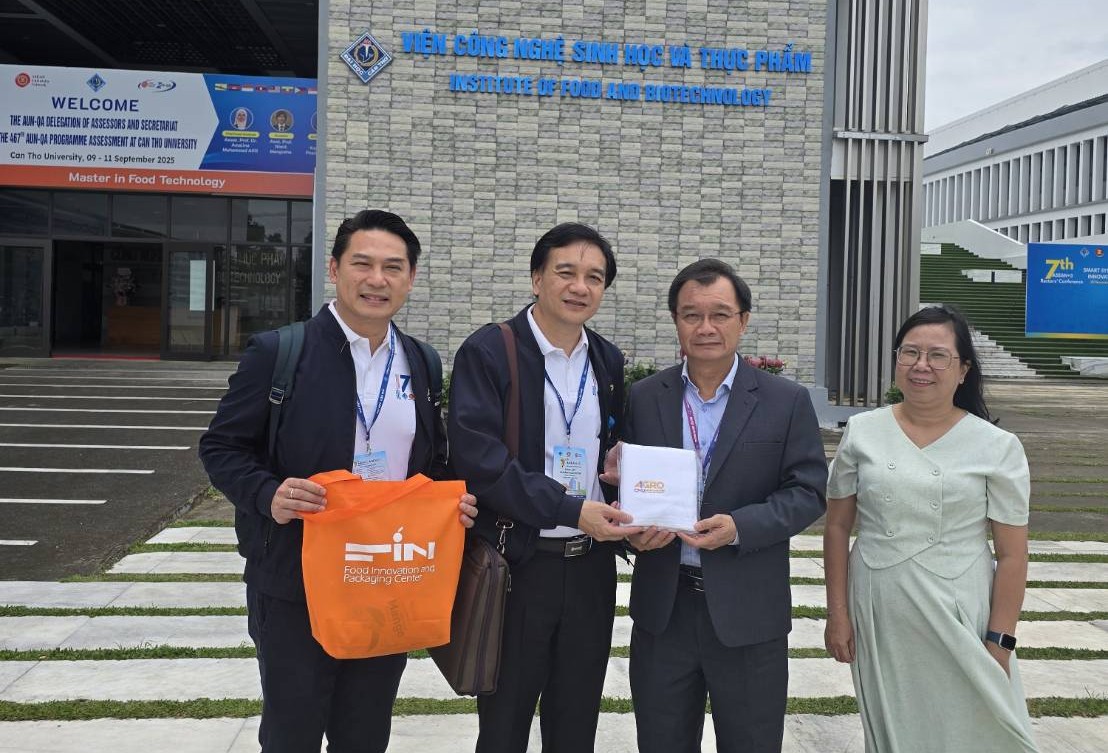
จากกากมอลต์สู่พรีไบโอติกเพื่อสุขภาพ
กากมอลต์ที่เหลือจากการผลิตเบียร์มักถูกมองว่าเป็นของเสีย แต่จริง ๆ แล้วมันสามารถแปรรูปเป็นส่วนผสมอาหารที่มีคุณค่าต่อสุขภาพได้ งานวิจัยล่าสุดพัฒนาเทคนิคการใช้ไมโครเวฟร่วมกับเอนไซม์เพื่อสกัดสารไซโลโอลิโกแซ็กคาไรด์ (XOS) ซึ่งเป็นพรีไบโอติกที่ช่วยเสริมการทำงานของจุลินทรีย์ดีในลำไส้ กระบวนการนี้ไม่เพียงเพิ่มประสิทธิภาพการสกัด แต่ยังลดการใช้สารเคมีและช่วยจัดการของเสียอย่างยั่งยืน
ผลการทดลองพบว่า XOS ที่ได้จากกากมอลต์สามารถกระตุ้นการเจริญเติบโตของแบคทีเรียโปรไบโอติกได้ดีเทียบเท่าพรีไบโอติกเชิงพาณิชย์ นั่นหมายความว่าของเหลือจากอุตสาหกรรมเบียร์สามารถกลายเป็นวัตถุดิบสำคัญในผลิตภัณฑ์อาหารเพื่อสุขภาพ ช่วยปรับสมดุลจุลินทรีย์ในลำไส้ ลดความเสี่ยงโรคเรื้อรัง และตอบโจทย์เทรนด์การบริโภคที่ใส่ใจสิ่งแวดล้อม
การเปลี่ยนของเหลือให้เป็นคุณค่าไม่ใช่แค่เรื่องเทคโนโลยี แต่เป็นก้าวสำคัญสู่การสร้างระบบอาหารที่ยั่งยืนและดีต่อสุขภาพของทุกคน
--
From Brewery Waste to Gut-Friendly Prebiotics
Barley malt residue, often discarded as waste from beer production, can actually be transformed into a valuable ingredient for health. Recent research has developed a technique using microwave-assisted enzymatic hydrolysis to extract xylooligosaccharides (XOS)—a prebiotic known for promoting the growth of beneficial gut bacteria. This process not only improves extraction efficiency but also reduces chemical use and supports sustainable waste management.
The study revealed that XOS derived from barley malt residue effectively stimulates probiotic growth, performing on par with commercial prebiotics. This means that what was once considered industrial waste can become a key component in functional foods, helping maintain gut balance, reduce chronic disease risks, and align with eco-friendly food trends.
Turning leftovers into health-promoting ingredients is more than just innovation—it’s a step toward a sustainable food system that benefits both people and the planet.
Topic: Xylooligosaccharides from Barley Malt Residue Produced by Microwave-Assisted Enzymatic Hydrolysis and Their Potential Uses as Prebiotics
Authors: Fareed, S.Z.| Tangjaidee, P.| Khumsap, T.| Klangpetch, W.| Phongthai, S.| Kanpiengjai, A.| Khanongnuch, C.| Unban, K.
Abstract:
Barley malt residue (BMR) was subjected to microwave-assisted enzymatic hydrolysis to evaluate its potential as a raw material to produce xylooligosaccharides (XOS) suitable for use as a prebiotic. The influent factors on XOS production, microwave power, exposure time, and xylanase dosage were ascertained with response surface methodology based on Box–Behnken design (BBD). The fitted models of XOS and xylose yields were in good agreement with the experimental results. Using a microwave power of 1235.1 W, a 6 min exposure time, and a xylanase concentration of 89.12 U/g substrate gave the highest yield of XOS: 208.05 mg/g substrate at 4 h of enzyme incubation time. Based on the product composition, BMR-XOS purification by Saccharomyces cerevisiae treatment was superior to the process of activated carbon adsorption and ethanol precipitation treatment and was selected for further experiments. Thin-Layer Chromatography (TLC) and high-performance liquid chromatography (HPLC) clearly elucidated the oligosaccharide compositions, and the result of Fourier Transform Infrared Spectroscopy (FTIR) confirms the molecular structure and sugar components of achieved BMR-XOS. In vitro fermentation of BMR-XOS obtained from this study by the selected probiotics, Lactococcus lactis TISTR 1401, Levicaseibacillus brevis FS 2.1, Lactobacillus casei TISTR 1463, showed similar prebiotic activity compared with the commercial XOS, galactooligosaccharides (GOS), xylose, and glucose (control). In conclusion, the present study was successful in establishing the use of barley malt residue for the extraction of xylan and XOS, which could be further used as a prebiotic.
Keywords: barley malt residue; microwave-assisted enzymatic hydrolysis; prebiotics; xylooligosaccharide
#อกมช. #agrocmu #CMU





